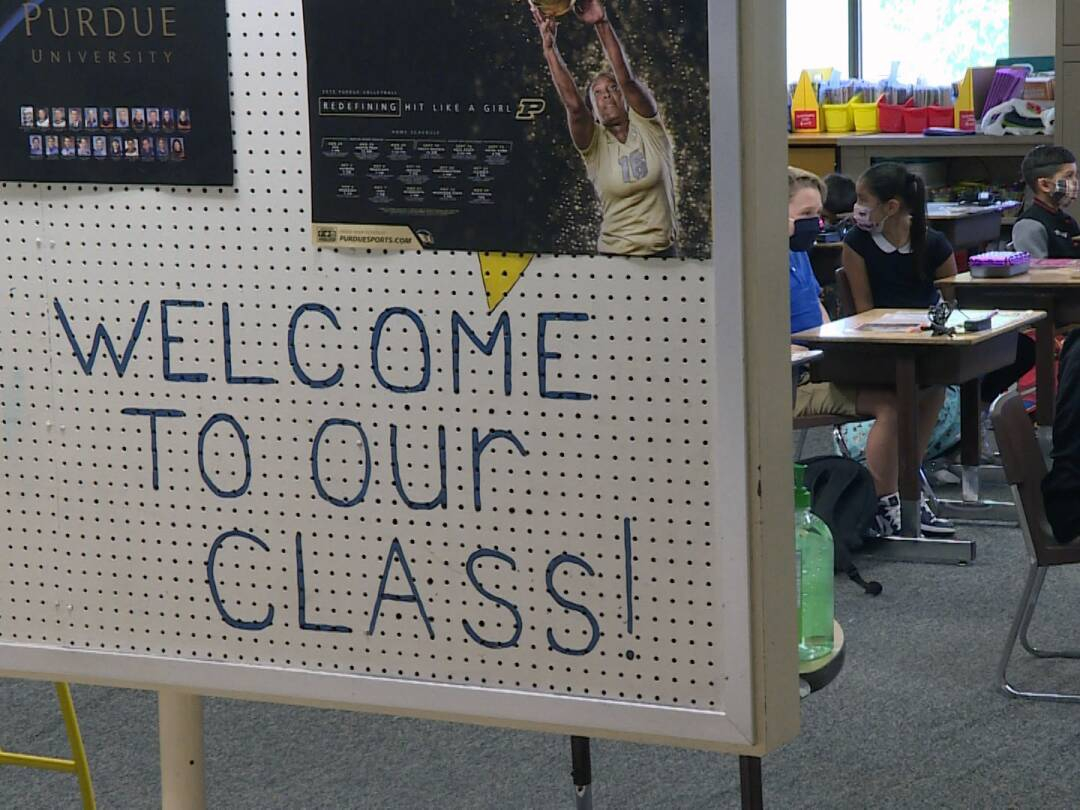Report on Staffing Adjustments and Strategic Alignment with Sustainable Development Goals at Notre Dame Educational Institution
Executive Summary
This report details recent personnel changes at the Notre Dame educational institution. The adjustments reflect a strategic alignment with several United Nations Sustainable Development Goals (SDGs), particularly in the areas of quality education, technological innovation, gender equality, and institutional strength. The transitions involve both internal reassignments to enhance curriculum delivery and departures that create new partnerships within the broader educational and digital media landscape.
SDG 4: Quality Education
The institution is reinforcing its commitment to providing inclusive and equitable quality education through strategic curriculum and faculty adjustments.
- Curriculum Enhancement: Core academic instruction is being strengthened through the reassignment of Mr. Burford to teach sophomore and junior English and composition.
- Modern Skills Development: Mr. Peters will lead a newly created digital media lab and strategy class, ensuring students receive relevant, modern education.
- Continuity in Foundational Education: Ms. Siebert’s transition to teaching fourth grade at St. Augustine Catholic School supports the broader educational ecosystem by contributing skilled educators to foundational learning stages.
SDG 8: Decent Work and Economic Growth & SDG 9: Industry, Innovation, and Infrastructure
The faculty changes promote sustained, inclusive economic growth and foster innovation by adapting to the demands of the digital economy and enhancing technological infrastructure.
- Fostering Innovation: The establishment of a digital media lab and the launch of an official esports program, led by Mr. Peters, represent a significant investment in modern educational infrastructure (SDG 9).
- Adapting the Workforce: Mr. Keusenkothen’s transition to Digital Media Director for the Encyclopedia of Catholic Theology highlights the growing importance of digital skills and creates pathways for educators into technology-focused roles (SDG 8).
- Expanding Technical Expertise: Mr. Peters’ expanded duties, which include information technology, computer science, and advanced technology classes, directly contribute to developing a skilled workforce prepared for future industries (SDG 8).
SDG 5: Gender Equality & SDG 16: Peace, Justice, and Strong Institutions
The institution demonstrates a commitment to building effective, accountable, and inclusive institutions at all levels, including the promotion of gender equality in leadership roles.
- Promoting Female Leadership in Athletics: While transitioning her primary teaching role, Ms. Siebert will continue to serve as an assistant softball coach. This retention ensures continued female leadership and mentorship in sports, contributing to gender equality (SDG 5).
- Ensuring Institutional Stability: The managed and thoughtful transitions of all mentioned faculty members underscore the stability and resilience of the institution. The continued engagement of departing staff, as exemplified by Ms. Siebert, reflects a strong, inclusive institutional culture (SDG 16).
SDG 17: Partnerships for the Goals
The staff transitions foster collaborative partnerships between educational institutions and knowledge-sharing platforms, strengthening the means of implementation for sustainable development.
- Inter-Institutional Collaboration: Ms. Siebert’s new role at St. Augustine Catholic School, while maintaining a coaching position at Notre Dame, creates an informal partnership and knowledge-sharing channel between two key community educational bodies.
- Knowledge-Sharing Partnerships: Mr. Keusenkothen’s move from a secondary school to a global open-access theological resource strengthens the connection between formal education and broader platforms for lifelong learning.
Which SDGs are addressed or connected to the issues highlighted in the article?
-
SDG 4: Quality Education
The article is centered around a secondary school, Notre Dame, and discusses the roles of teachers, the subjects they teach, and the introduction of new courses. This directly relates to the goal of ensuring inclusive and equitable quality education. The transition of teachers and the creation of new digital media and technology classes highlight the school’s efforts to maintain and enhance its educational offerings.
-
SDG 8: Decent Work and Economic Growth
The article details the career movements of several individuals, which is a core aspect of employment and the labor market. It describes teachers transitioning to different roles within the same institution, moving to other schools, or leaving the teaching profession for a new industry. This connects to the goal of promoting sustained, inclusive, and sustainable economic growth, full and productive employment, and decent work for all.
What specific targets under those SDGs can be identified based on the article’s content?
-
Target 4.1: By 2030, ensure that all girls and boys complete free, equitable and quality primary and secondary education leading to relevant and effective learning outcomes.
The article focuses on Notre Dame, a secondary education institution. The discussion of experienced teachers like Mr. Keusenkothen (seven years at the school) and Ms. Siebert teaching core subjects such as English, composition, and theology points to the school’s function in providing quality secondary education.
-
Target 4.4: By 2030, substantially increase the number of youth and adults who have relevant skills, including technical and vocational skills, for employment, decent jobs and entrepreneurship.
This target is directly addressed through the introduction of new classes. The article states that Mr. Peters will teach “the newly created digital media lab and strategy class,” in addition to “information technology, computer science and advanced technology classes,” and will coach the “new esports program.” These courses are designed to provide students with modern technical and digital skills relevant for future employment.
-
Target 4.c: By 2030, substantially increase the supply of qualified teachers, including through international cooperation for teacher training in developing countries.
The article underscores the importance of qualified teachers by detailing their experience and subject matter expertise. For example, it mentions Mr. Keusenkothen taught civics and theology for several years, and Ms. Siebert taught mythology, English, and composition. The departure and transition of these teachers implicitly highlight the challenge of retaining a qualified teaching staff.
-
Target 8.5: By 2030, achieve full and productive employment and decent work for all women and men, including for young people and persons with disabilities, and equal pay for work of equal value.
The career changes described in the article are examples of employment dynamics. Mr. Keusenkothen is “leaving Notre Dame after seven years to become the digital media director for the Encyclopedia of Catholic Theology,” which represents a transition to a new role in a different organization. Ms. Siebert’s move to “elementary education teaching fourth grade at St. Augustine Catholic School” also illustrates the pursuit of productive employment.
Are there any indicators mentioned or implied in the article that can be used to measure progress towards the identified targets?
-
Implied Indicator for Target 4.1: Existence of a structured secondary education program with dedicated teachers for core subjects.
The article implies this by mentioning teachers assigned to specific grade levels and subjects, such as “sophomore and junior English and composition courses,” “theology instructor,” and “fourth grade at St. Augustine Catholic School.” This structure is a prerequisite for achieving effective learning outcomes.
-
Implied Indicator for Target 4.4 (related to official indicator 4.4.1): Proportion of youth and adults with information and communications technology (ICT) skills.
The article directly implies efforts to improve this indicator by listing the new courses being offered: “digital media lab and strategy,” “information technology,” “computer science,” and “esports.” The creation of these classes is a direct measure to equip students with ICT skills.
-
Implied Indicator for Target 4.c (related to official indicator 4.c.1): Proportion of teachers with the minimum required qualifications.
The article implies the presence of qualified teachers by describing their experience and roles. Mr. Keusenkothen’s seven-year tenure and experience teaching multiple subjects (civics, theology) and Ms. Siebert’s role teaching English and composition suggest they are qualified educators. The narrative around their departure and replacement is inherently linked to maintaining a qualified teaching staff.
SDGs, Targets, and Indicators Analysis
| SDGs | Targets | Indicators (Mentioned or Implied) |
|---|---|---|
| SDG 4: Quality Education | Target 4.1: Ensure quality primary and secondary education. | The article discusses a secondary school’s operations, including the teaching of core subjects like English and composition, which points to the provision of structured secondary education. |
| SDG 4: Quality Education | Target 4.4: Increase the number of people with relevant skills for employment. | The introduction of new courses such as “digital media lab and strategy,” “information technology,” “computer science,” and “esports” is a direct action to equip students with technical and ICT skills. |
| SDG 4: Quality Education | Target 4.c: Increase the supply of qualified teachers. | The article highlights the experience of its teaching staff (e.g., a teacher with seven years of service), implying a focus on maintaining a corps of qualified educators. |
| SDG 8: Decent Work and Economic Growth | Target 8.5: Achieve full and productive employment and decent work for all. | The article describes the employment transitions of several professionals, such as a teacher moving to a “digital media director” role and another transitioning to teach at a different school, illustrating active participation in the labor market. |
Source: semissourian.com







